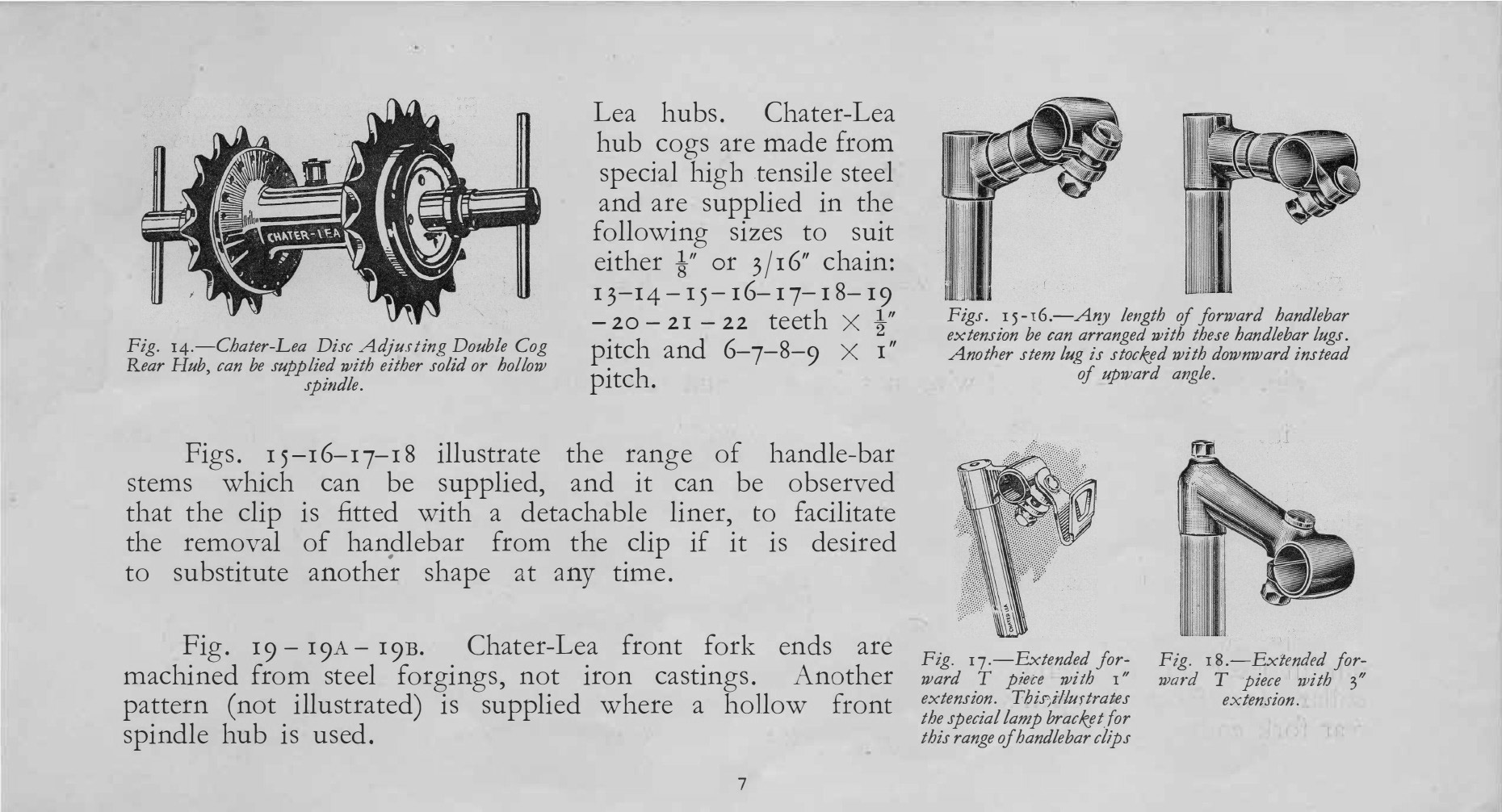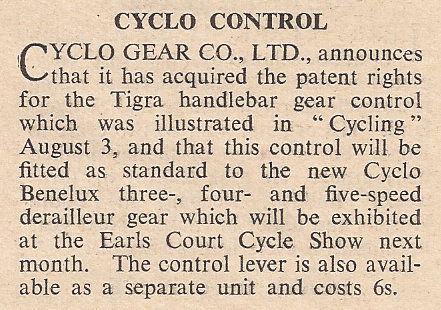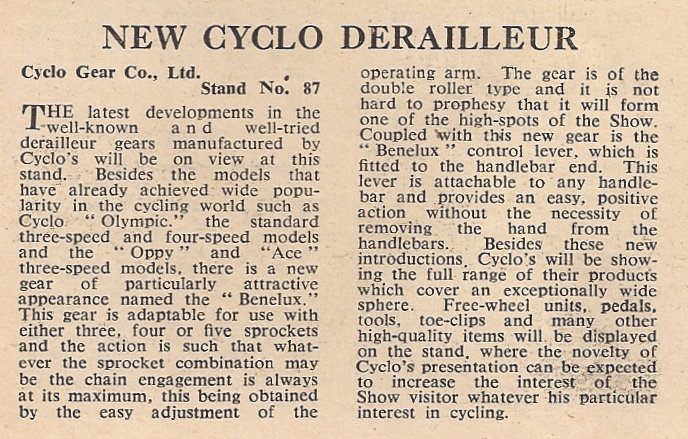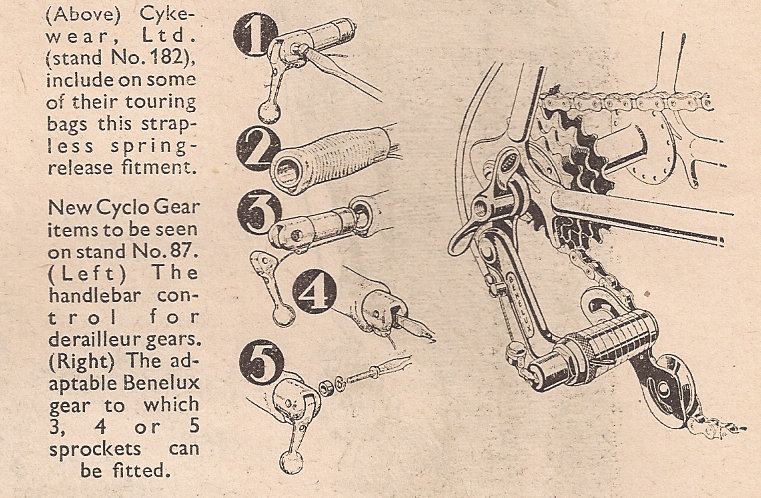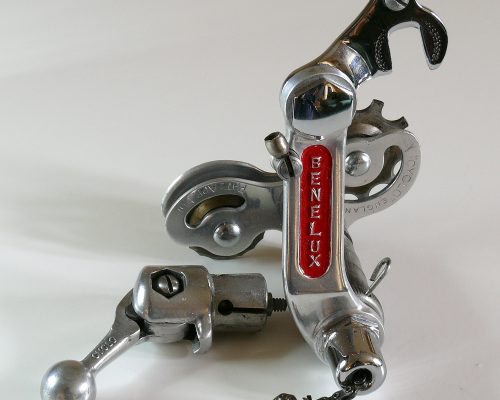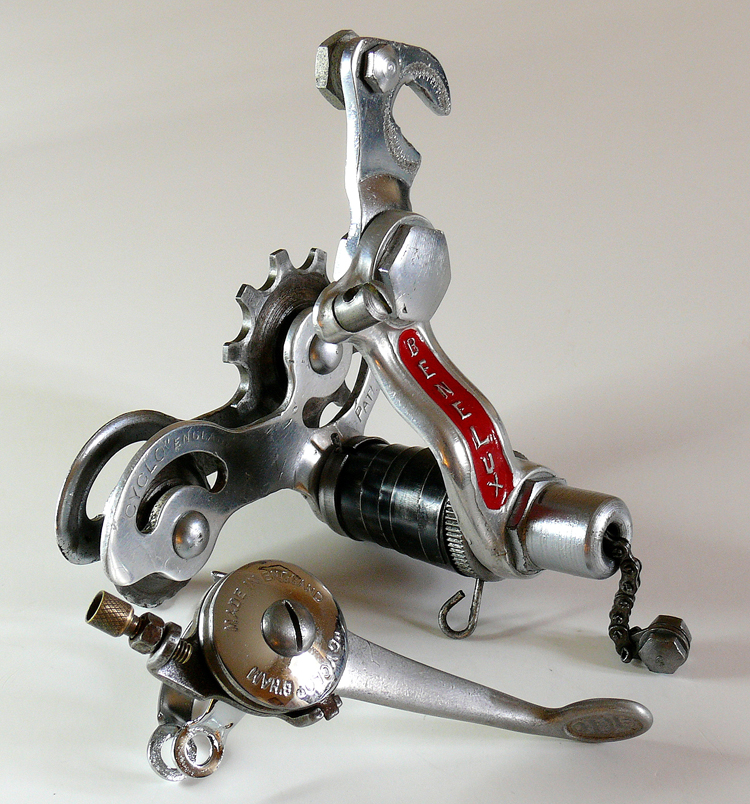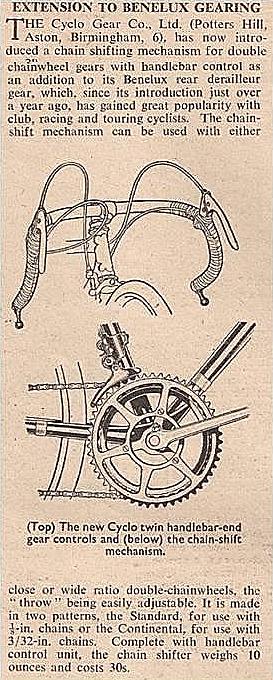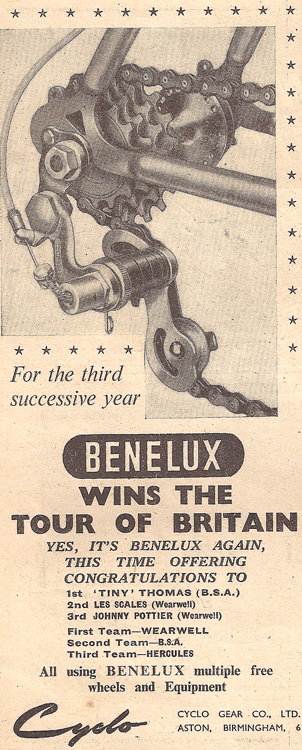Cyclo Benelux - Early derailleur mechanisms 1949 - 1953
Posted: Friday 12th June 2020
In September 1949 a small report appeared in Cycling announcing that the Cyclo Gear Co Ltd had acquired the patent for the ‘Tigra’ handlebar gear control. Tigra were a French manufacturer of alloy stems and handlebars. Cyclo decided that this control lever was to be supplied as standard equipment with the new Cyclo Benelux 3, 4 and 5 speed gears.
This is the earliest reference I have found to Benelux gears and I believe one of the earliest references to what we now know as a ‘bar end shifter’ being offered for sale in the UK. In September 1949 Fonteyn offered a bar end control named the ‘Passvitesses’. This had been introduced in France by Jacques Souhart in 1946 and had been used in the Tour De France in 1949.
Cyclo were famous for their ‘Standard’ ‘Oppy’ and ‘Ace’ gear systems (pre-war designs) and following WW2 had launched the ‘Olympic’ (1947) and ‘Super Olympic’ (1948) models, both of which appeared to have limited success.
The first ‘Benelux’ gear was launched at the Earl’s Court show in the Autumn of 1949 and was very well received.
The unit was available for 3 & 4 speeds with 1/8” chain and 5 speeds with 3/32” chain. The latter being claimed to allow a range from 13-23 teeth. Based on a later ‘Cycling’ test report of April 1950, it appears that there were already modifications being made to the gear. I suspect that this may relate to the fact that due to the demand for ever lighter components, the Benelux gear had an alloy arm and cage which probably had a tendency to bend and distort.
In early 1951 Cyclo launched a new cable operated front mechanism which allowed the use of double chain wheels giving a potential of 10 gears. This required 2 bar end shifters as shown in this article in Cycling from January 1951.
By November of 1951 the rear mechanism design had been changed considerably. The arm had been ‘beefed up’ and was now ‘S’ Shaped and the cage comprised of one steel plus one alloy plate. This made the unit slightly heavier but probably stronger.
By this date many of the lightweight cycle manufacturers were offering Benelux gears as an option along with offerings from Simplex and Huret. The Benelux units were extremely popular.
1953 saw the introduction of yet another revised version of the Benelux mechanism.
The arm and both cage plates were now steel. One assumes that bending and distortion must have still caused problems and as a result the unit was now made of stronger materials. It may have been that this was purely a cost cutting exercise though. There were now 2 versions also, the ‘Standard’ and the ‘Sport’. The sport version appears simply to have cosmetic differences only.
Eventually the basic Benelux mechanism evolved into the mark 7. This was hugely successful and available for many years only being phased out during the 1960’s. This is surprising perhaps for a plunger / push rod derailleur design. It was a long time before Cyclo adopted a design (far too late) to compete with other manufacturers’ parallelogram designs which had been available from Campagnolo many years earlier. Benelux ‘plunger’ gears were available for approximately 20 years in total, being finally phased out at the end of the 60’s.
Steve Warne – March 2019
Posted: Friday 12th June 2020
This article appears in the following categories.
Upcoming Events
Whether you are looking for a gentle social meet up, or a 100-mile ride browse the community’s upcoming events and plan your next weekend outing.
